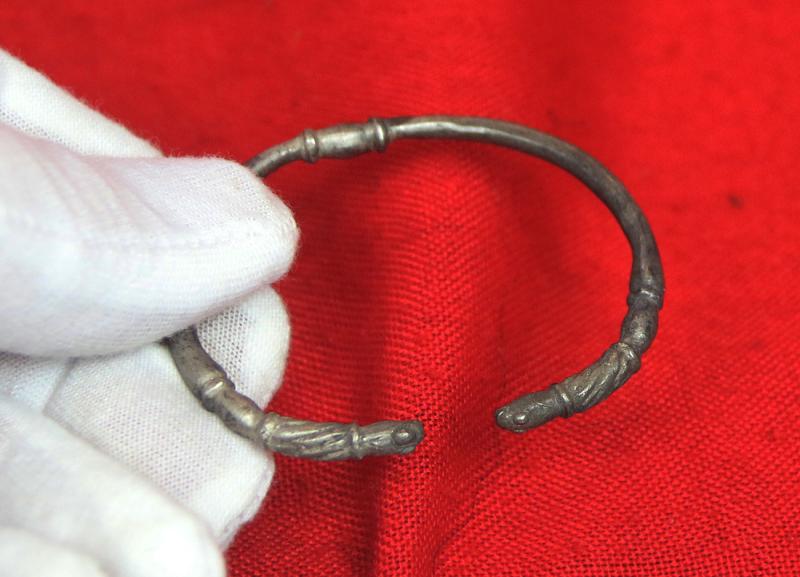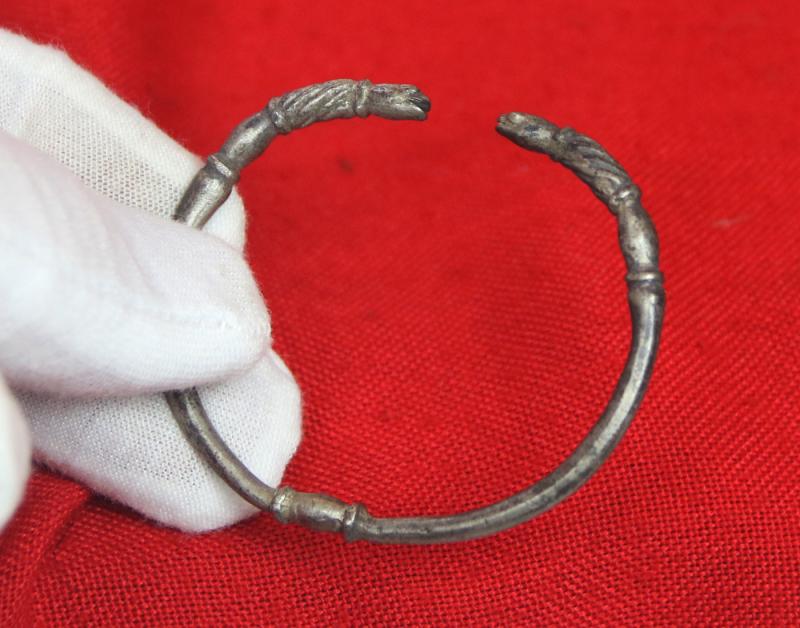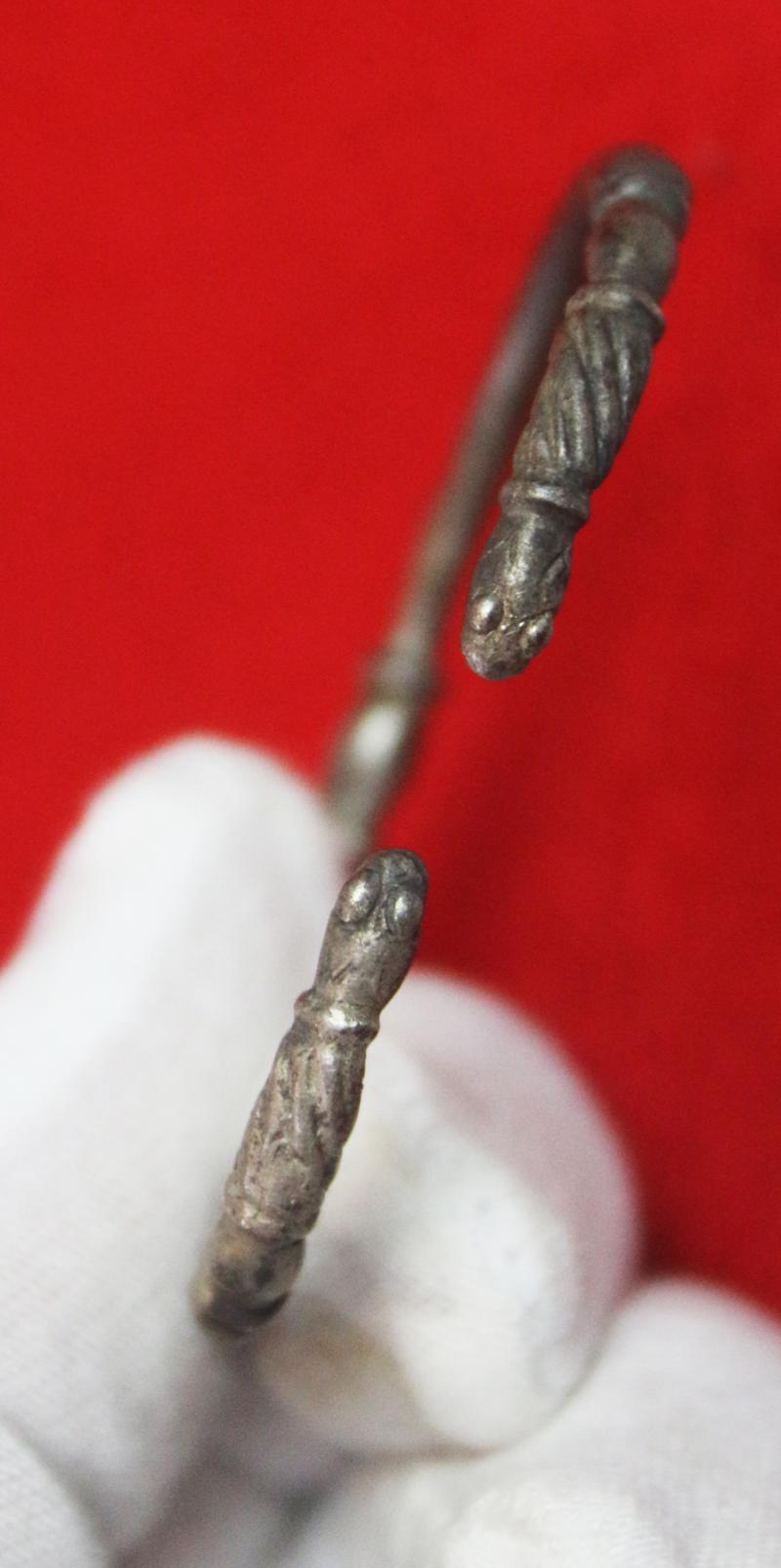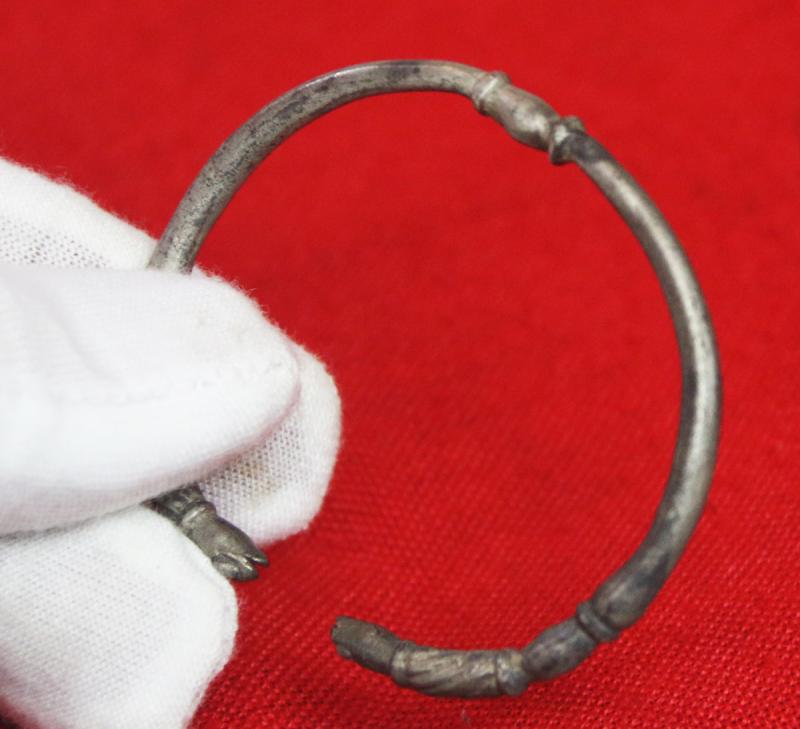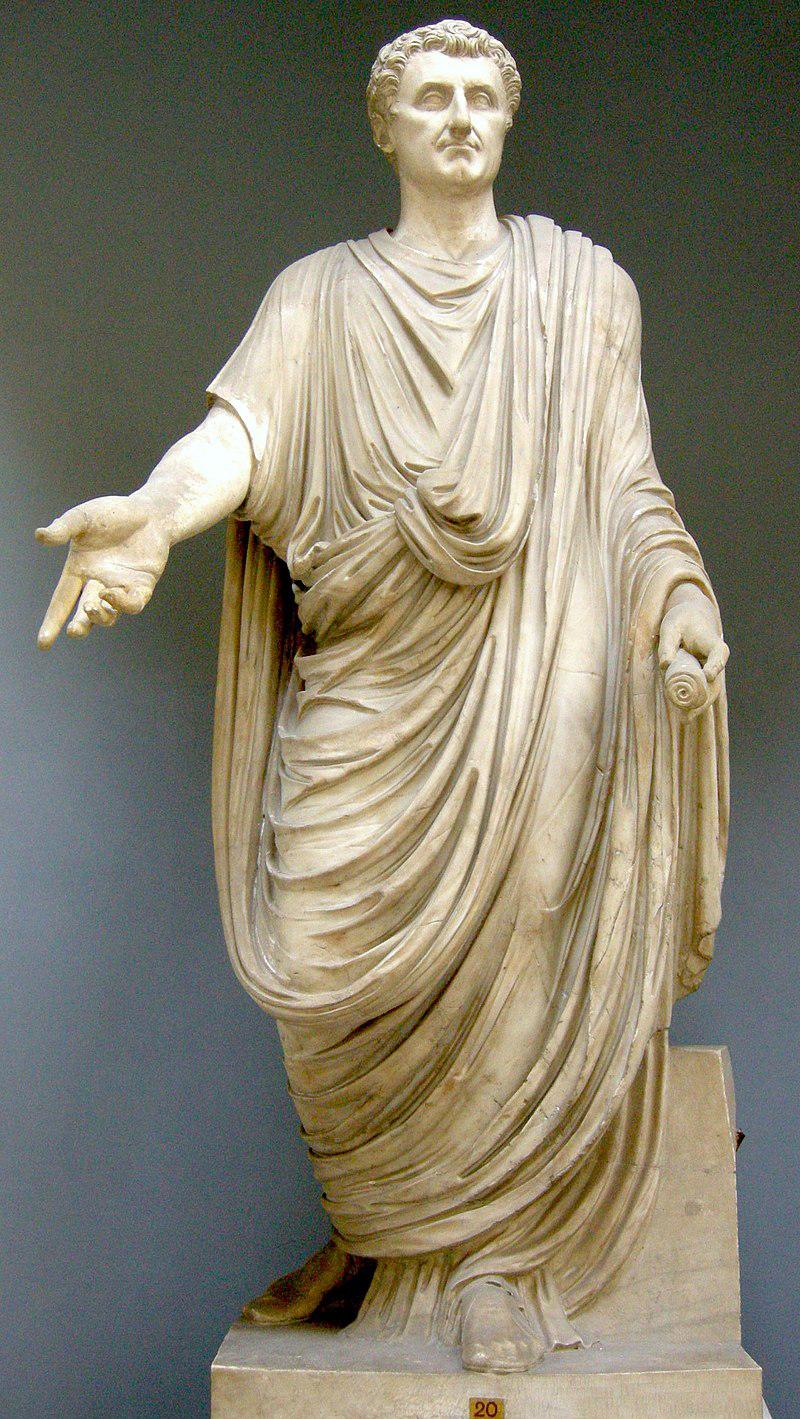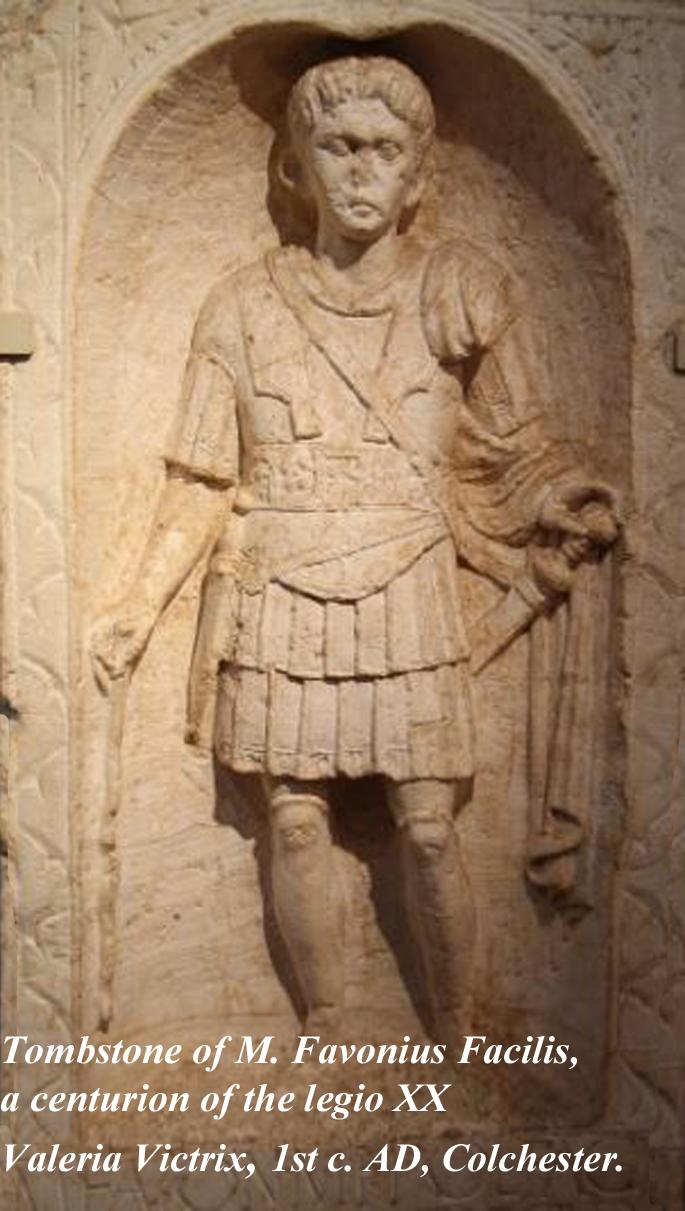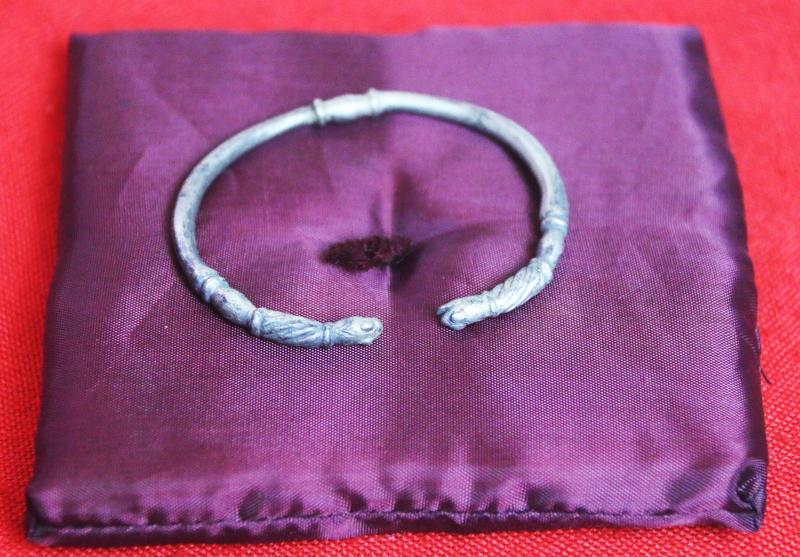A Superb & Stunningly Beautiful Ancient Roman, Solid Silver, Serpent Head Armilla. Likely of a Centurion, Equites or Patrician. Around 1900 to 1800 Years Old. Worn From The Period of Emperors Trajan, Hadrian, Marcus Aurelius, Lucius Verus, & Commodus
An amazing survivor from the time of some of the most famous and renowned of all the ancient Roman Emperors;
Trajan (98–117 CE)
Hadrian (117–138 CE)
Antoninus Pius (138–161 CE)
Marcus Aurelius (161–180 CE)
Lucius Verus (161–169 CE)
Commodus (177–192 CE)
Publius Helvius Pertinax (January–March 193 CE)
Marcus Didius Severus Julianus (March–June 193 CE)
Septimius Severus (193–211 CE)
Being of silver it was the prerogative and use of only the higher ranking Roman as a sign of status. Silver and gold were limited for the use and adornment of only the superior status grade of ancient Roman, be they military or civilian. Made and used by a mid to high ranking military citizen such as centurion or equites, or of the governing citizen class known as patricians.
Patricians were considered the upper class in early Roman society. They controlled the best land and made up the majority of the Roman senate. It was rare—if not impossible—for a plebeian to be a senator until 444 BC. In appearance, they were chiefly distinguished from the plebs by their dyed and ornamented shoes (calceus patricius). A common type of social relation in ancient Rome was the clientela system that involved a patron and client(s) that performed services for one another and who were engaged in strong business-like relationships. Patricians were most often the patrons, and they would often have multiple plebeian clients. Patrons provided many services to their clients in exchange for a promise of support if the patron went to war. This patronage system was one of the class relations that most tightly bound Roman society together, while also protecting patrician social privileges. Clientela continued into the late Roman society, spanning almost the entirety of the existence of ancient Rome. Patricians also exclusively controlled the office of the censor, which controlled the census, appointed senators, and oversaw other aspects of social and political life. Through the censors, patricians were able to maintain their status over the plebeians.
Through the military ranks centurions were divided into grades. First Spear (primus pilus): The primus pilus was the commanding centurion of the first century of the first cohort and the most senior centurion of a legion. The primus pilus could be promoted to praefectus castrorum. On retirement, he would most likely gain entry into the equestrian class.primi ordines: They were the five centurions of the first cohort and included the primus pilus. They outranked all centurions from other cohorts. pilus prior: A centurion in command of the first century of a cohort, making him the senior centurion of the cohort. During a battle, the pilus prior was in command of his cohort. They would have been veteran centurions, who had been promoted through the cohorts.
Pilus posterior: The second centurion in a cohort.
Princeps prior: The third centurion in a cohort.
Princeps posterior: The fourth centurion in a cohort.
Hastatus prior: The fifth centurion in a cohort.
Hastatus posterior: The sixth centurion in a cohort.
Jewellery in the Roman Republic
The core ideologies of the Roman Republic, centred around moderation and restraint, meant that elaborate jewellery was relatively unpopular until the transformation to imperial rule. The law of the Twelve Tables in the 5th century BC, limited the amount of gold which might have been buried with the dead. The Lex Oppia, 3rd century BC, fixed at half of an ounce the amount of gold which a Roman lady might have worn. During the Roman Empire, however, jewellery became a public display of wealth and power for the elite.
Rings of the higher ranks were often embellished with intaglios, cameos and precious gemstones. Mythology and Roman history were used as a repertoire of decorative themes. Roman rings featuring carved gemstones, such as carnelian, garnet or chalcedony, were often engraved with the depiction of deities, allegories and zoomorphic creatures. Snake-inspired jewels held many amuletic connotations. In particular, snakes were associated with the healing snake of Asclepius, the Roman god of medicine and science.
54mm wide, approx 13 grms
Every single item from The Lanes Armoury is accompanied by our unique Certificate of Authenticity. Part of our continued dedication to maintain the standards forged by us over the past 100 years of our family’s trading
Code: 25473
1395.00 GBP

